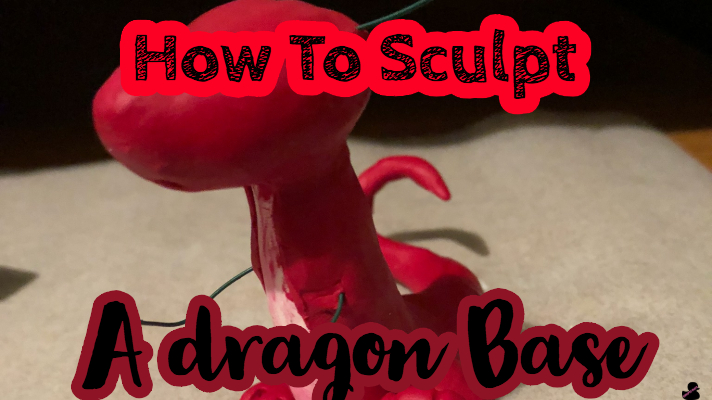Polymer Clay Dragons can be pretty tricky to make in one bake. By thinking of the design of your dragon and the position he will be in and making a Polymer Clay Dragon base for him, he will be much easier to sculpt. This is a fast and easy way to sculpt a plain base to work from, and bakes in thirty minutes.
What you will need
- Plain white or scrap polymer clay
- Wire
- Pliers
- Oven
- Baking pan
- Dotting tools
Kneading the Clay for the Polymer Clay Dragon Base

Start by kneading white clay into a softened ball, so that it is easy to work with. Conditioning is very important in sculpting with polymer clay, as it will make the clay much easier to handle.
Shaping the Body
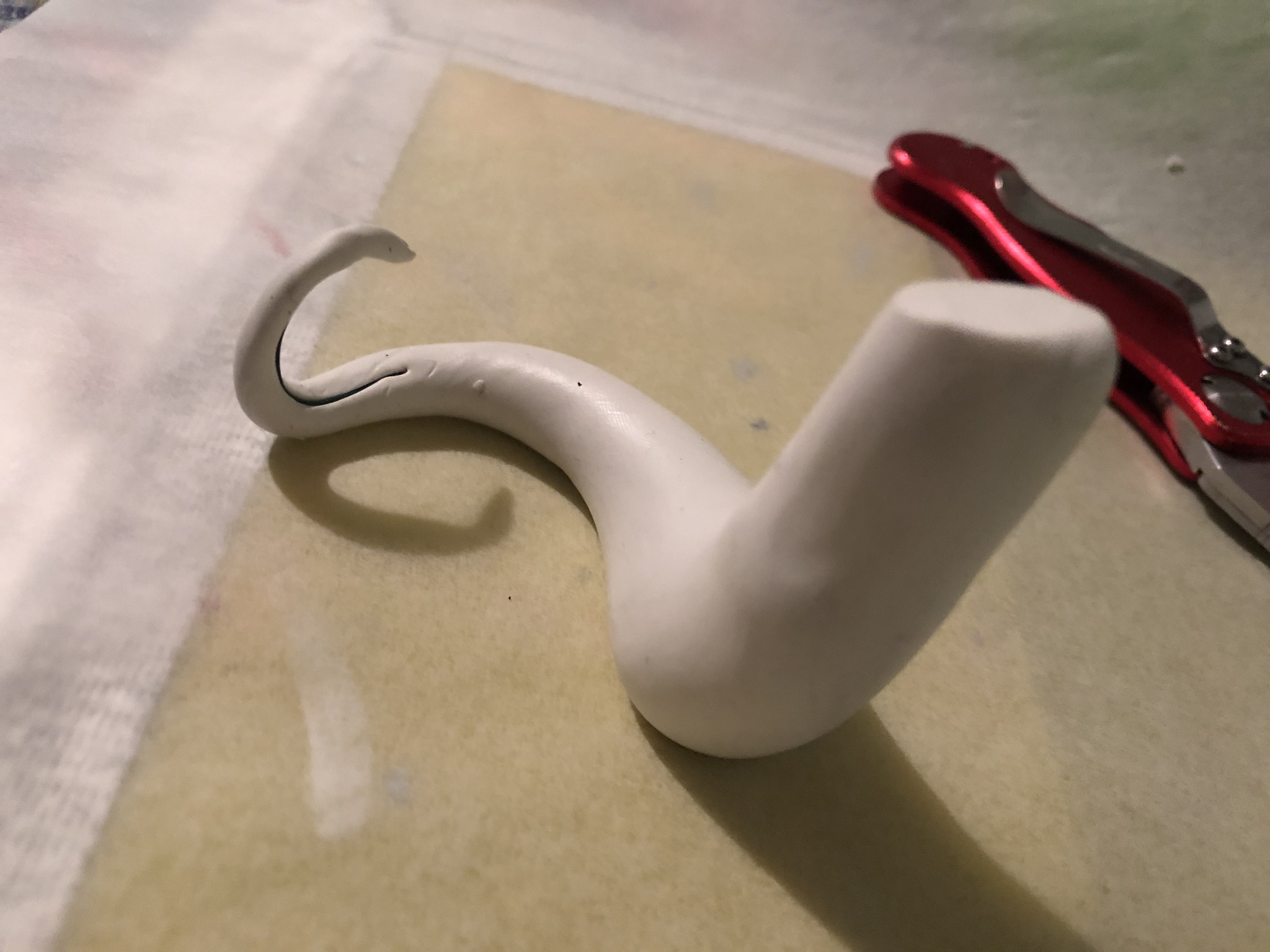
Make a snakelike shape, with one end narrowing into a point, the middle being slightly chunkier, and the chest being smooth and narrowing into the neck. Make him sitting up, with his tail slightly curled behind him for stability.
Sculpting the Head
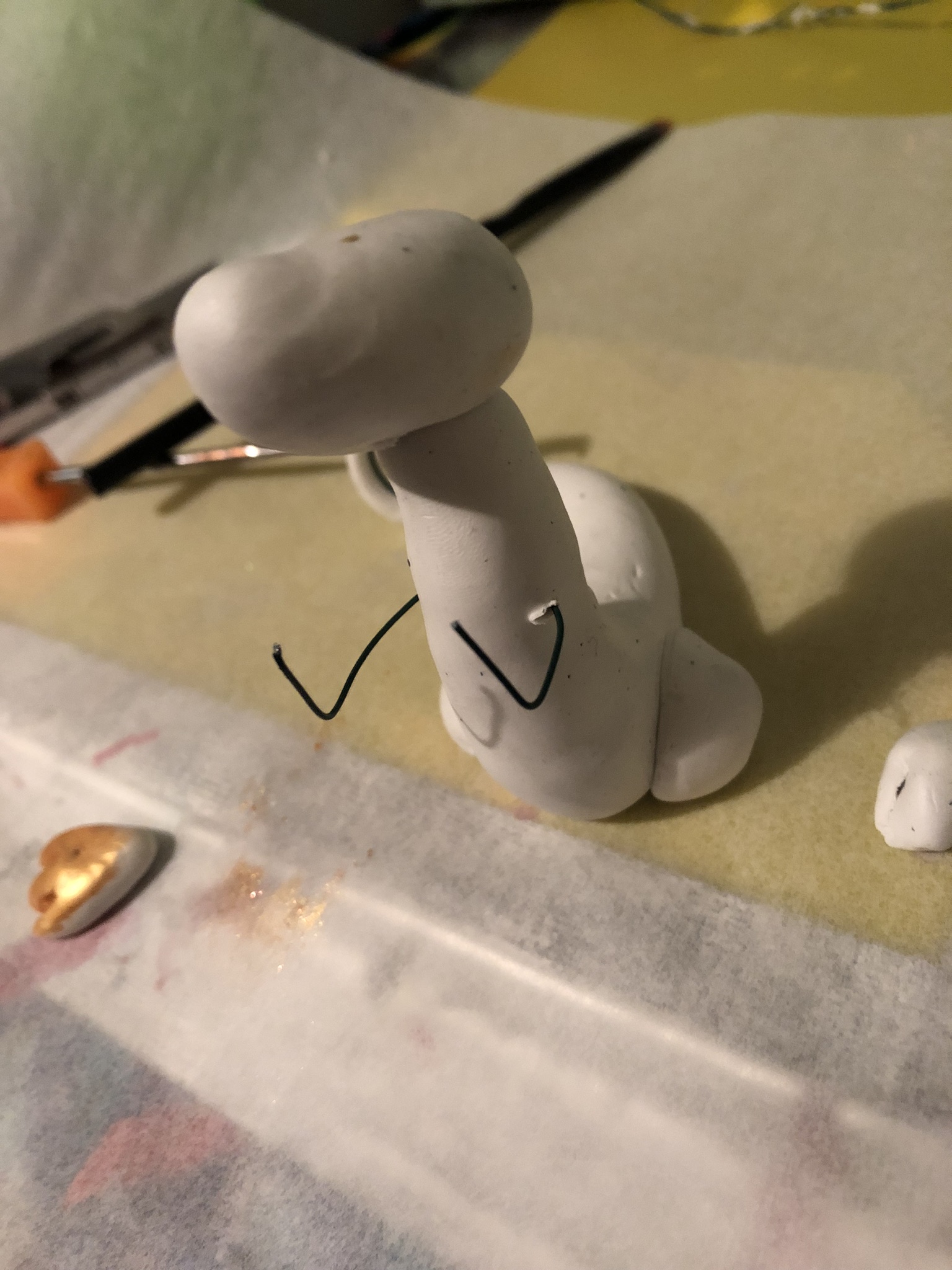
Make a teardrop shape, and make minor adjustments to the face. I try to make my dragons as kawaii as I can, but feel free to make any head shape you wish.
Considerations and options for Improvement
You may wish to consider adding indents on the base, as this is to help save clay, in places such as the eye sockets and the nostrils. You could also draw things on the base before adding the clay, such as a heart or the name of the dragon that will be taking the base once sculpted fully. Remember that polymer clay can be baked several times, so if you want to edit your piece later, use some liquid sculpey to attach the pieces and bake it again. Sculpey does not easily melt in the oven. If your dragon has wings, carefully add holes with the wire you will use for the wing base, and later when you sculpt the body, attach the wings and smooth everything over with clay.
Sculpting the Body of the Dragon Base
Remember you want him to be a little chunky and cute, but if the body looks wonky, keep playing with it until it is a shape you think looks good. Remember, if your art does not make you happy, redo it until you love it. Do not let your art bully you, and do not give up on it.
Sculpting the Arms
I only stuck wire through the core of the dragon and bent it for arms, but as a result the dragon later cracked several times from lack of stability. I recommend making little nubby arms on top of the wire, with no paws, and sculpting the paws and details after the arm bases are secured and baked.
Sculpting the Legs
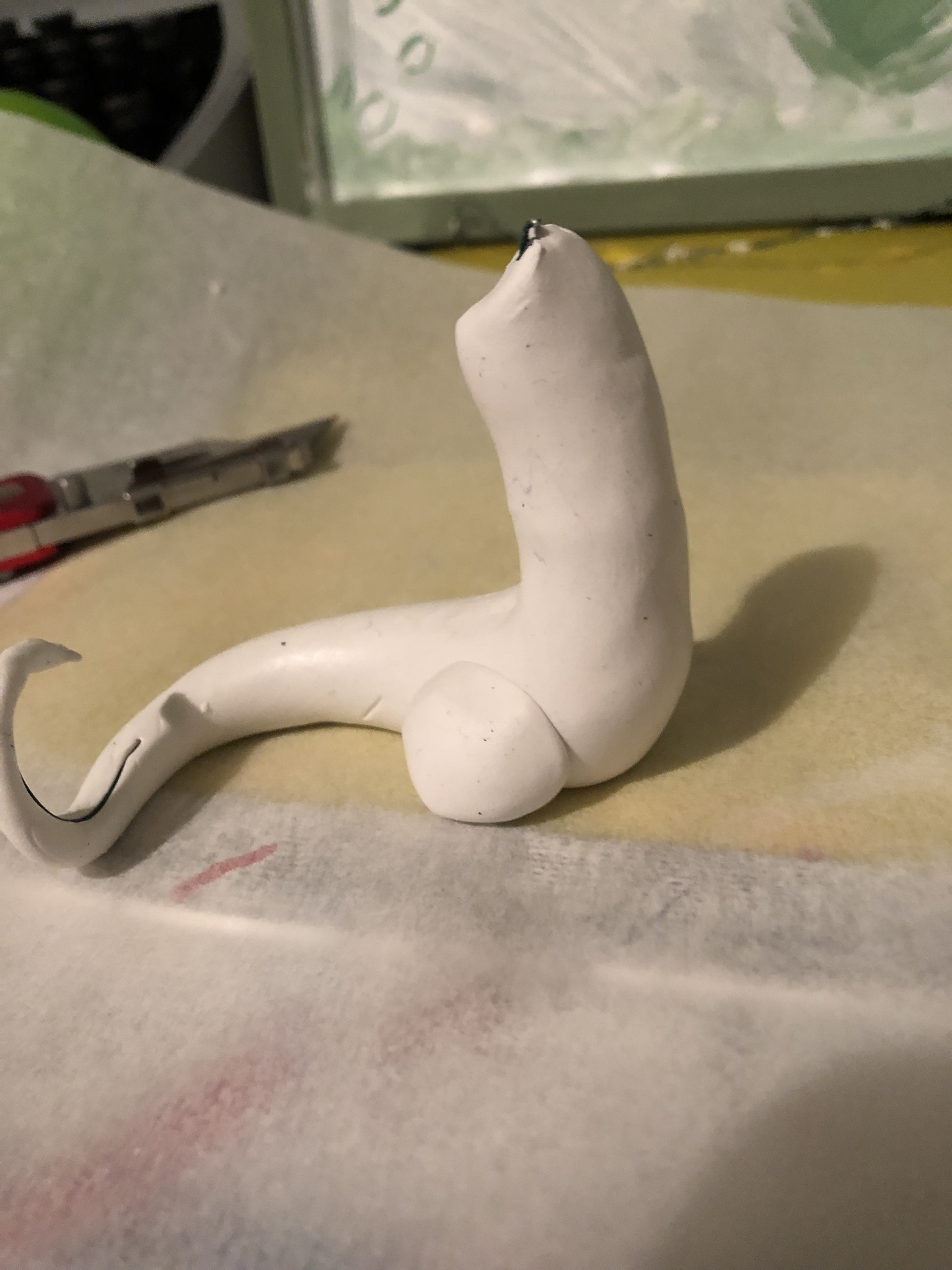
Make two little oval shapes and plop them on either side of the dragon where the back legs should be. Secure them well and blend the clay, but do not add feet. The feet should be added as part of the top layer of where the clay is.
Shaping the Tail of the Polymer Clay Dragon
Shape the tail in whatever curves or swirls you want, and press a wire into the underside to help support it. Don’t worry about covering the tail up with clay, that will happen with the second coat of clay as part of the dragon’s skin. Just make sure the wire is not harshly poking out.
Baking the Polymer Clay Dragon
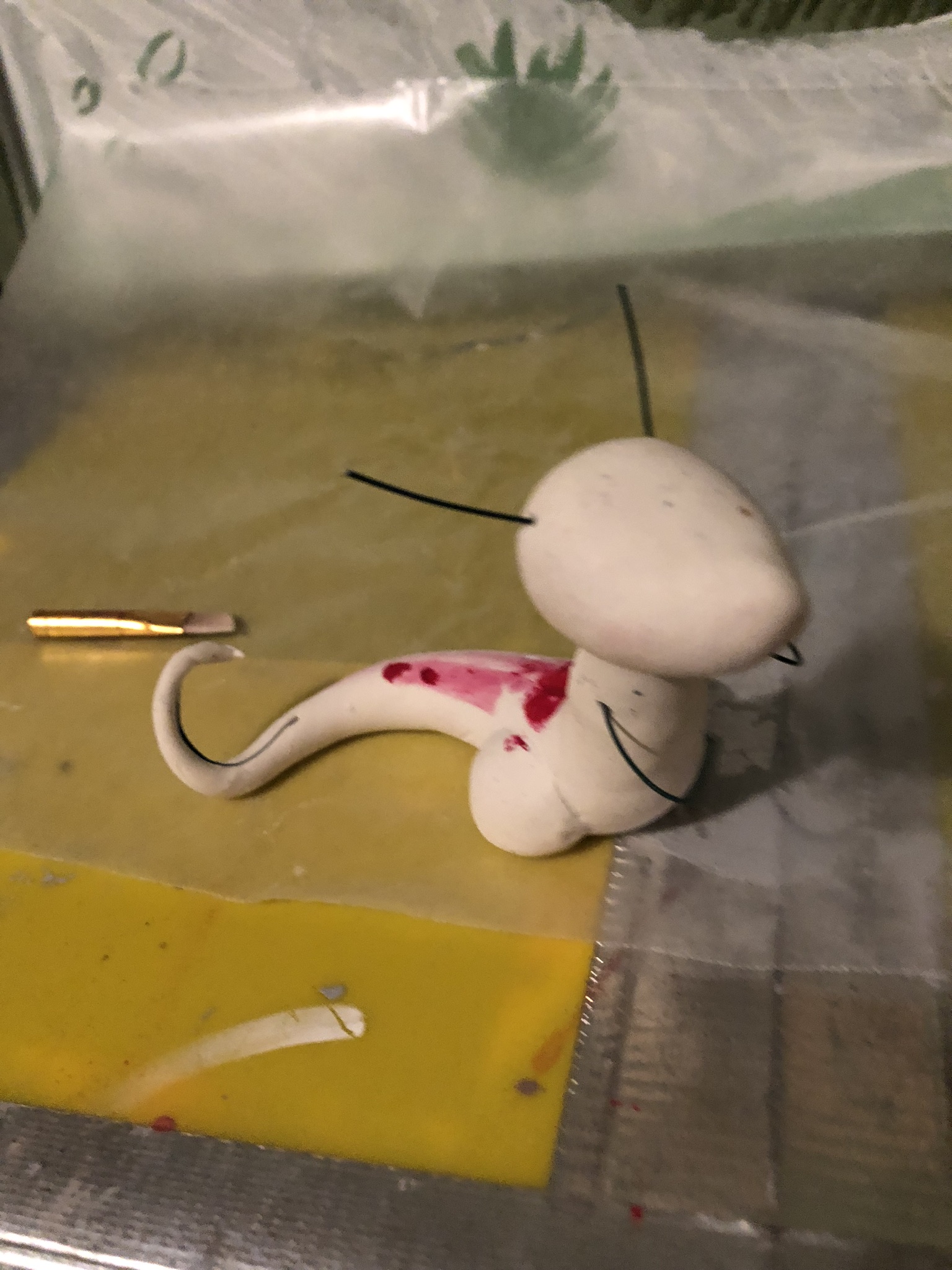
Throw the clay masterpiece into the oven at 275 for 30 minutes, making sure the figure stays sitting up and does not fall forward.
Finish
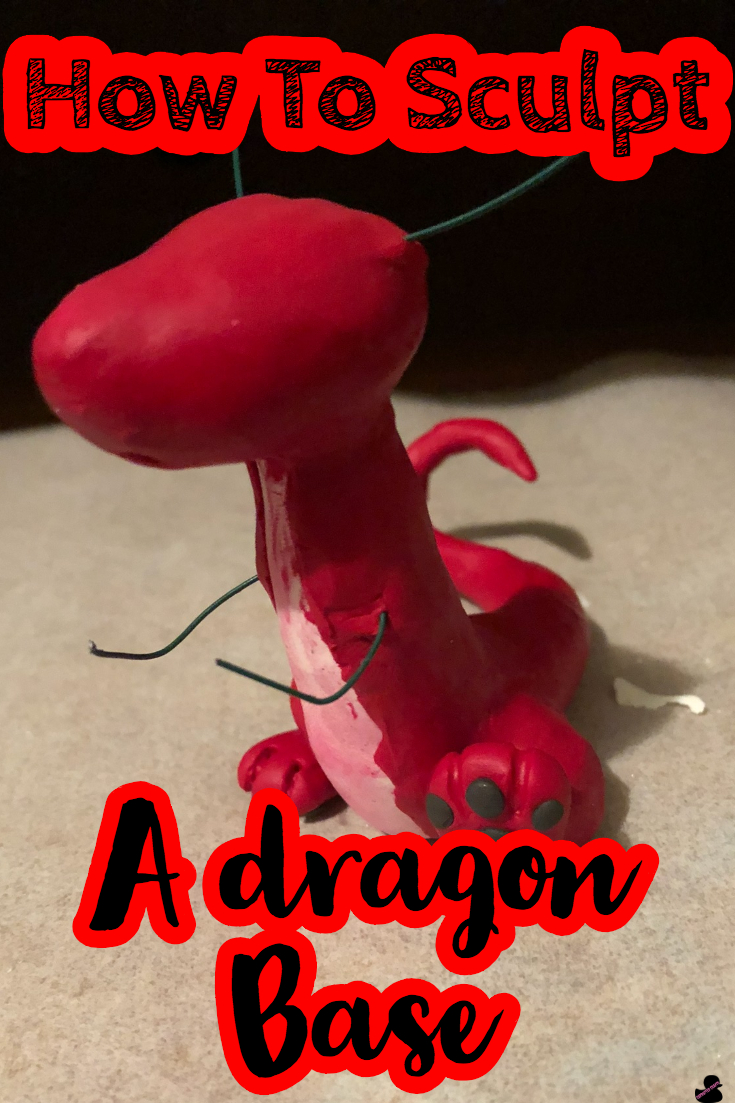
Your little base is ready to be transformed into a magical dragon. This base will provide a stable surface to decorate and bring your dragon to life. Happy Crafting!

